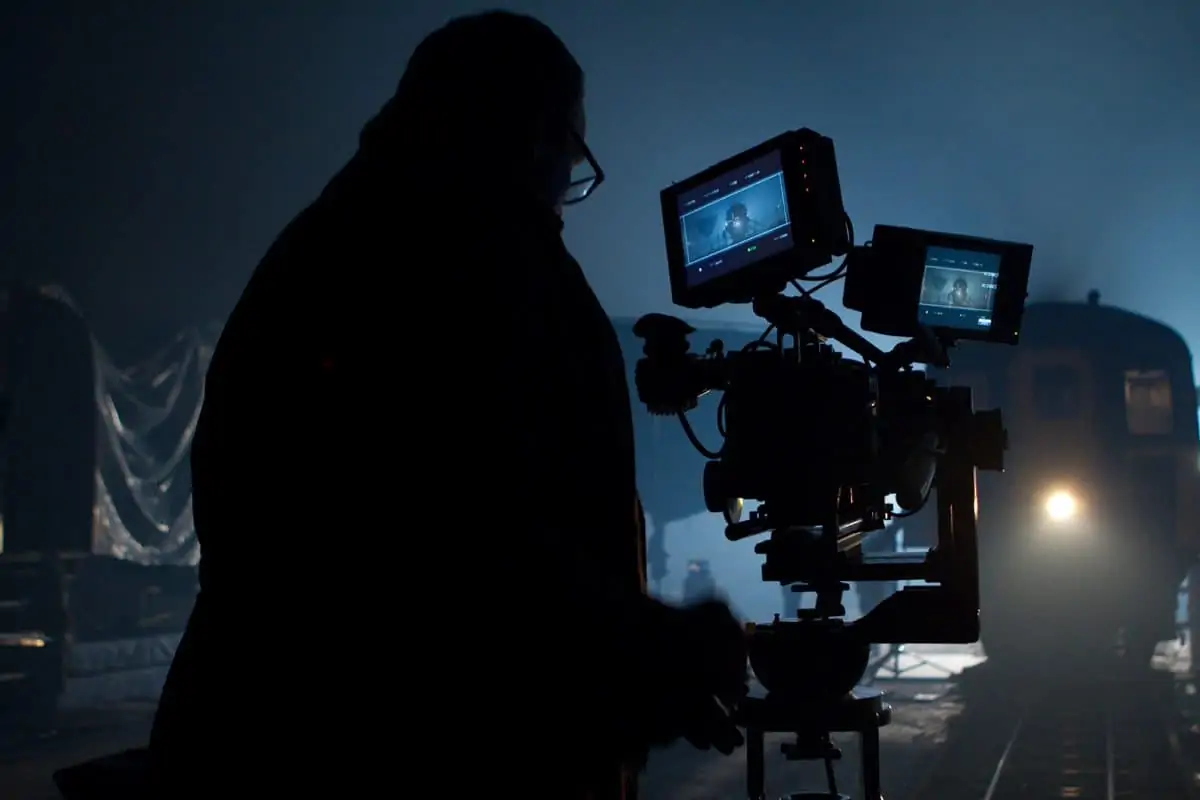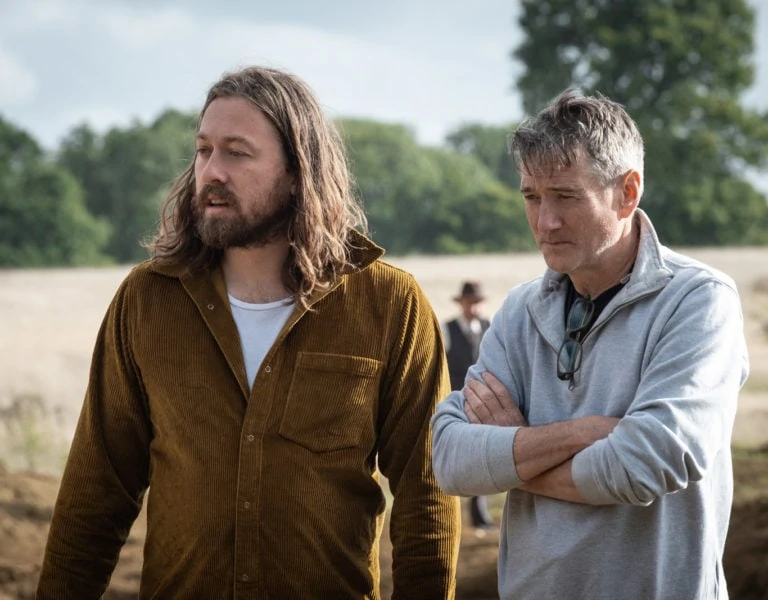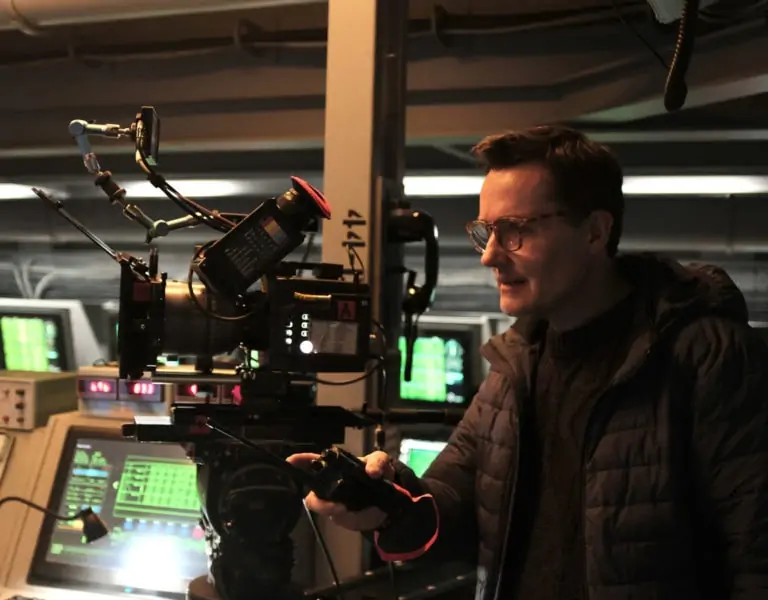KINDRED SPIRITS
A compelling performance-driven tale of unexpected friendship, deteriorating mental health and haunting childhood trauma is captured with sensitivity and considered naturalism by Angus Hudson BSC and a gifted filmmaking team.
“One of the many appeals of being part of this project was making a film with Sophia Loren – a worldwide treasure and one of the last Hollywood icons,” says Angus Hudson BSC (Cashback, Last Passenger), remembering the cherished production experience of shooting Italian-language drama The Life Ahead in the summer of 2019.
“Playing the lead Madame Rosa in The Life Ahead also took Sophia out of the more glamourous roles associated with her and back to her earlier grittier roles in films such as Vittorio De Sica’s 1960 drama Two Women which won her an Oscar.”
Having collaborated on short film Away We Stay in 2010, there was already a connection between Hudson and Italian director Edoardo Ponti, Loren’s son. When Ponti came to co-write the screenplay for The Life Ahead (La vita davanti a sé) with Ugo Chiti and direct the film, he wanted Hudson to help capture the poignant story for the screen.
“Edoardo and I have a similar sensibility,” says the DP. “He’s one of the most appreciative and generous directors I’ve worked with. As a collaborator, he trusts me Implicitly, giving me confidence to put forward my vision.”
An adaptation of Romain Gary’s 1975 novel The Life Before Us, relationship-focused drama The Life Ahead is set in the Southern Italian city of Bari and depicts the unlikely bond between two kindred spirits – Sengalese street orphan Momo (Ibrahim Gueye) and Madame Rosa (Sophia Loren), the elderly Holocaust survivor, former prostitute and children’s caretaker who reluctantly agrees to look after the turbulent 12-year-old. Their strengthening connection is marred with sadness as Madame Rosa’s post-Holocaust trauma and deteriorating health become increasingly apparent.
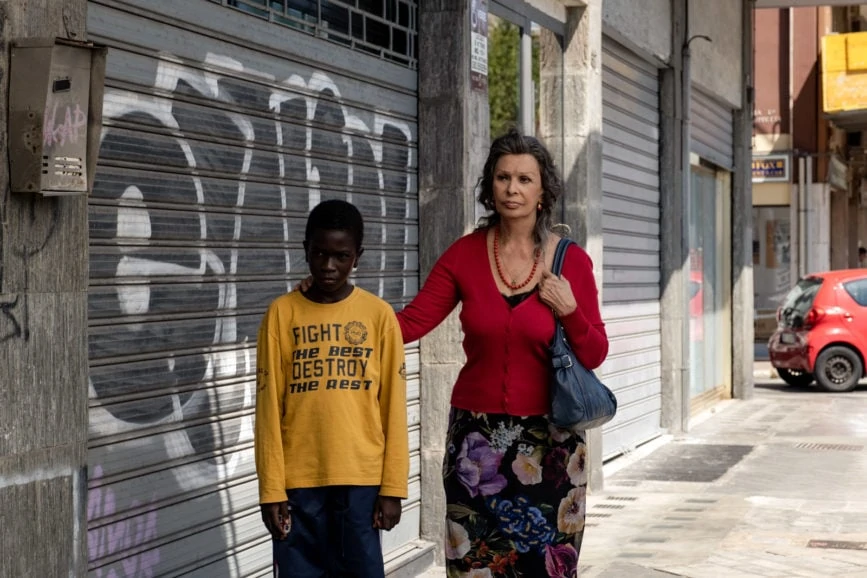
The story has history as Gary’s novel was adapted for the screen in Mosche Mizrahi’s 1977 French film Madame Rosa, set in Paris like the book. Starring Simone Signoret, it is the type of strong performance piece Hudson is drawn to.
In the recent retelling, the powerful performances he adores were again the lynch pin in the storytelling. “Ibrahim Gueye who plays Momo is such a special young man,” says Hudson. “He’d never acted before and we were blown away by his natural talent. His tears in heart-wrenching scenes such as when Momo visits Madame Rosa in hospital were completely unprompted. On top of the incredible performances, the script is so moving and the storyline touches on issues surrounding racism, immigration, religion and identity which I wanted to capture.”
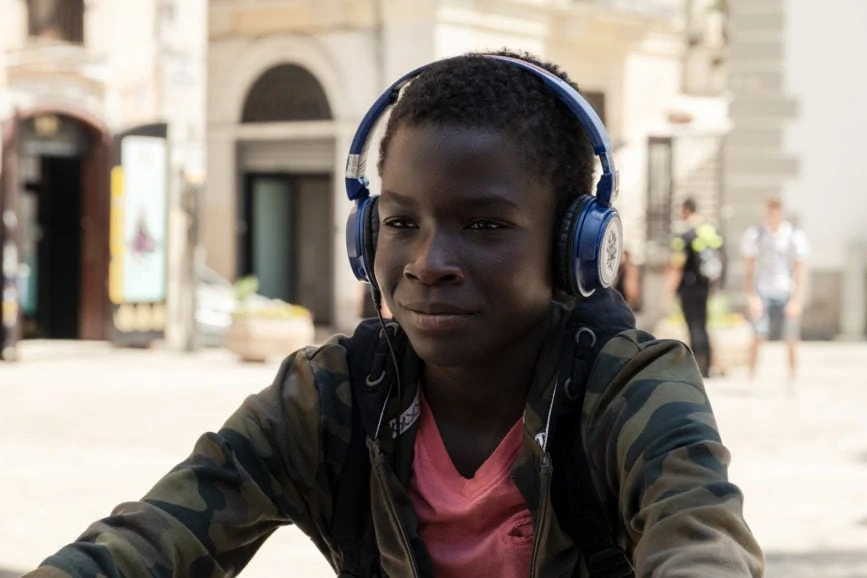
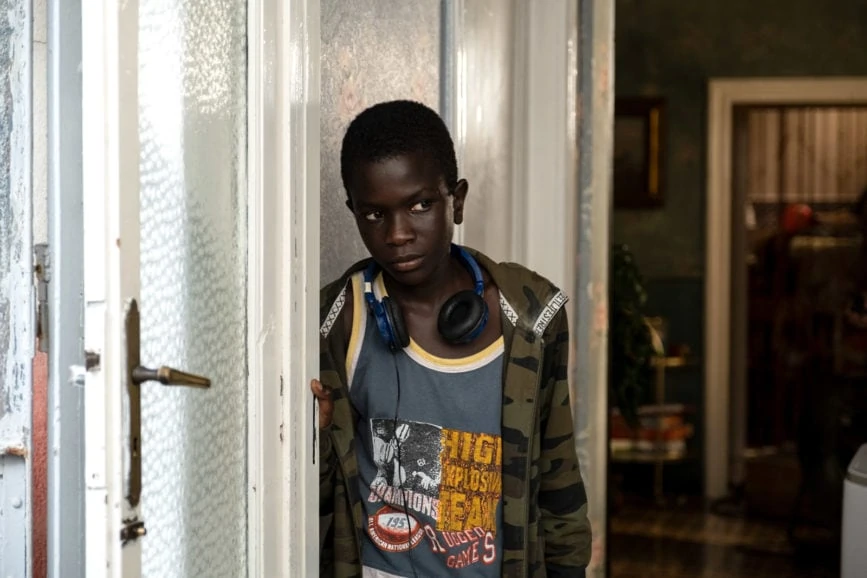
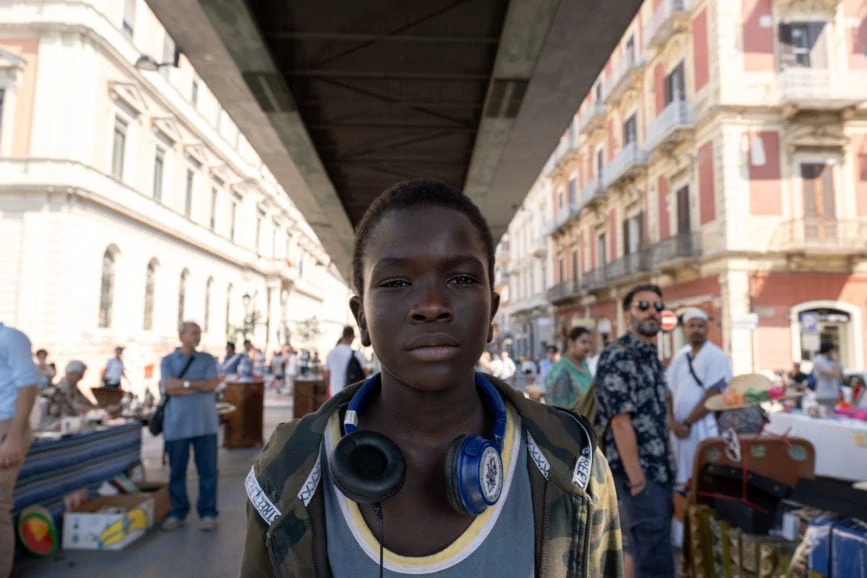
CRAFTED AND CONSIDERED NATURALISM
Ponti spent extensive periods traveling around Puglia before official pre-production began, and chose most locations in the bustling port town of Bari and nearby Trani. This meant the relatively short three-week prep period, much of which played out in Madame Rosa’s apartment, was sufficient.
The interior and exterior locations we would work with pushed me towards a crafted, considered and enhanced naturalism.
Angus Hudson BSC
Hudson was primarily influenced by the sea, light, and architecture and the somewhat down at heel nature of Bari which was juxtaposed against the story. The film’s look and feel were largely developed during a week of recces with Edoardo and production designer Maurizio Sabatini. “Sometimes references too early on obstruct the creative process because you’ve already decided what the film will be without being informed by the actual locations,” he says. “I got the job based on Edoardo wanting to work with me again. Not having to pitch my vision was liberating because we didn’t enter the production process with preconceived ideas.”
With the visual direction driven by the surrounding environment, the director-cinematographer duo tried bringing key characteristics of Southern Italy into the storytelling. “The interior and exterior locations we would work with pushed me towards a crafted, considered and enhanced naturalism.”
Although loath to overly rely on reference material, the DP’s naturalistic approach was partly stimulated by the work of late 19th, early 20th century portrait painter John Singer Sargent. “Had he been alive today, I think he would have been a photographer or cinematographer,” says Hudson. “He had a very naturalistic way of painting that bucked the trend at the time, and I often revisit his work.”
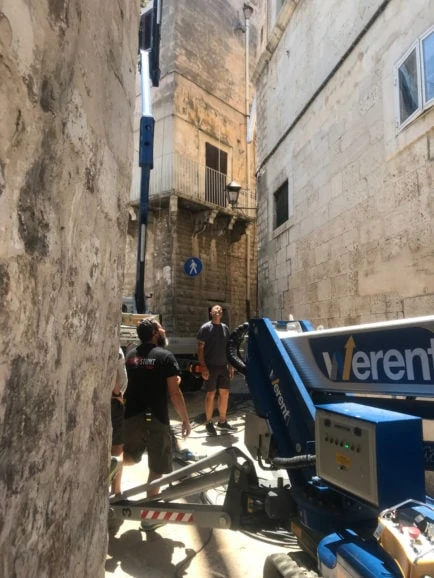
The filmmakers incorporated the natural colour of materials like Puglia’s trademark limestone, which brings warmth and softness to any frame. Aware that lead characters Madame Rosa and Momo would often wear vibrant clothing, Hudson contrasted that saturation with the muted colours of Madame Rosa’s apartment. Experimenting with the contrast between dark interiors and sunshine captured the essence of a “slightly tired Southern Italian town”. “In hot Mediterranean climates, houses often have their curtains drawn or shutters closed during the day to keep out the heat, creating darker interiors with the occasional stream of sunlight blasting through the gaps, illuminating the rooms with bounced light.”
When making informed decisions about how lighting and production design would work in unison, Hudson was blessed with la crème de la crème of the Italian film industry such as production designer Maurizio Sabatini, who has worked with acclaimed Italian directors such as Giuseppe Tornatore and Roberto Benigni. “I barely had to tell him anything,” says Hudson. “He’s so experienced and sensitive to what might affect the lighting and how to design and dress a set for the lens. I loved everything he did, from the colours of wallpaper he chose and the minute detail in the set dressing to placing a coloured gel on glass to break up a background. You could point your camera anywhere and it would just work.”
In preparation, Hudson worked with trusted digital workflow supervisor and collaborator Francesco Giardiello, capturing footage in Rome to develop a single show LUT to use for the entire film to bond a variety of lighting conditions and locations harmoniously, enhancing the natural beauty of the surroundings, creating a “rich, sumptuous, heightened naturalism” in terms of colour and tonal separation and how they responded to and sat with how highlights and shadows rolled off.
PLAYING WITH LIGHT
Shooting for three weeks in the primary filming location, Madame Rosa’s apartment – a “maze of rooms and corridors with little natural light” – was demanding, as Hudson explains: “Like many medieval Italian towns, Trani is made up of narrow winding alleyways. The apartment looked out onto neighbouring buildings’ walls just metres away, partly designed to keep out sunlight and heat, making it hard to get lights through windows. We used narrow based small Spiderlift cherry pickers to light through windows. It could be like threading a cherry picker through the eye of a needle – we could never get quite enough distance on the lamps.”
Illumination responsibilities were entrusted to Francesco Zaccaria, a gaffer who’d come highly recommended to Hudson by John Mathieson BSC. Zaccaria, Ponti and Hudson explored how to light Loren so she would “look amazing but not gloss over her age”. The DP wanted to avoid using flat beauty lighting which could look “too artificial or contrived and overly lit” and shot lighting tests to develop the most suitable approach. “I wanted to use naturalistic lighting to allow her age to emerge whilst also being respectful,” he says. “At the time, Sophia was 84 and a fabulous 84-year-old at that, which Edoardo and I wanted to see on camera.”
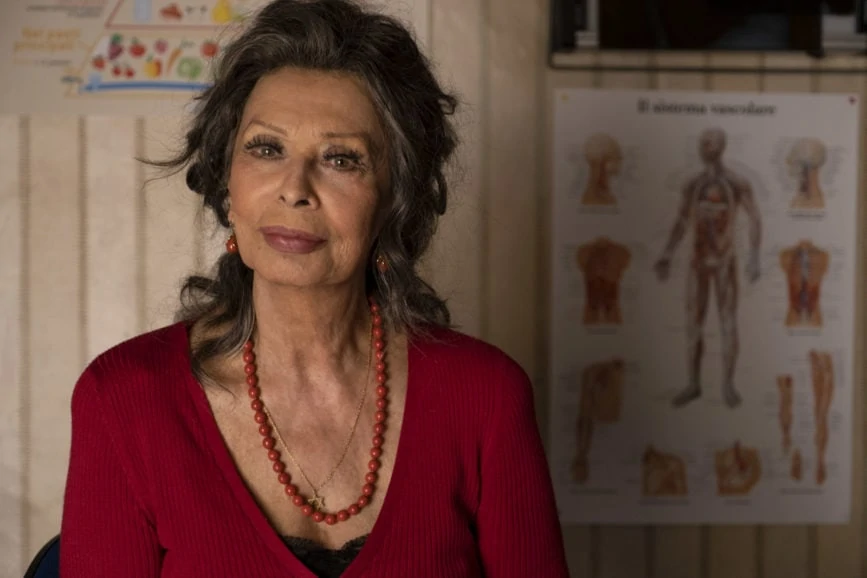
They discussed how best to light the locations to fulfil Hudson’s desire for total freedom of camera movement and achieve his preference for lighting through windows. Wanting to play with strong sunlight in most scenes, the cinematographer investigated with Zaccaria which available lamps could achieve this effect.
Traditionally, HMI lights might be used as a daylight source through windows, but the team used tungsten lights as the primary light source for sunlight to warm things up. A new technique for Hudson was reviving an old technique – working with tungsten light in daylight. “I was aware of the approach but hadn’t found the right opportunity to work with strong tungsten PAR64 light sources, in this case 8 light Maxi Brutes. There’s an art to sculpting the hard light tungsten fixtures of this kind produces that is being forgotten, especially with so many people pushing towards LED.”
Three Maxi Brutes were often set up on two small cherry pickers to enter a window at different angles, using different bulbs in each fixture – mediums, spots, and sometimes ACL’s (Air Craft Landing Lamps). One fixture was used for softer fill and fitted with medium bulbs and partially corrected with 1/2 CTB and diffused to simulate blue sky. For direct sun, the other fixtures had uncorrected spot and/or medium bulbs.
“For something really punchy, we used ACLs – bright DC powered spot PAR64s that run a bit cooler. This combination created the effect of a mixed level warm strong sunlight whilst injecting a cooler fill light into shadows, and with our LUT applied, created the desired level of colour separation.”
Although tungsten was predominantly used for all key lights, when needed, smaller LED lamps such as Kino Flo Diva-Lites and 1×1 Litepanels Geminis provided localised fill. “Occasionally we fixed skirted Fomex RollLites on the ceiling, all invaluable additions to the tungsten package. A few smaller HMI lamps were on hand for subtle bounced fill.”
Night work, like the colourful scenes shot at the bar Momo visits, relied on a combination of tungsten Maxi Brutes and PAR Cans – for backlights and lighting backgrounds – and LED technology to light the mid and foregrounds, relying extensively on Astera AX1s which are “much easier to work with in those kinds of situations”.
The scenes in the cellar room, Madame Rosa’s retreat, were the only sequences requiring a set. Without natural light, all lighting was driven by practicals in shot, occasionally enhanced with tungsten 150w Dedolights, 1×1 LED LightPanels, with skirted and diffused LED Fomex RollLites in the ceiling to lift the ambience. “Achieving the right balance through the lighting was involved as we had to light for 360 degrees. Other locations were real, so you just lived with them and enhanced what was going on naturally, but you could actually create this one,” says Hudson.
A RECIPE FOR SHOOTING SUCCESS
From first coming on board, Hudson wanted to shoot in a widescreen 2.39:1 aspect ratio with a full frame camera. “I’d tested the Sony Venice but hadn’t shot a production on it,” he says. “A couple of friends had shared the fantastic experiences they’d had shooting on the camera, so this was a great chance to explore the opportunities.”
As well as preferring full frame, Hudson wanted to shoot at high ISOs which the Venice excels at. “We had the option to shoot at 2500 ISO, so we did, even in full sunlight, although we sometimes used 7-stops of ND. The higher ISO creates a unique texture, holds shadow detail and handles highlights remarkably well.”
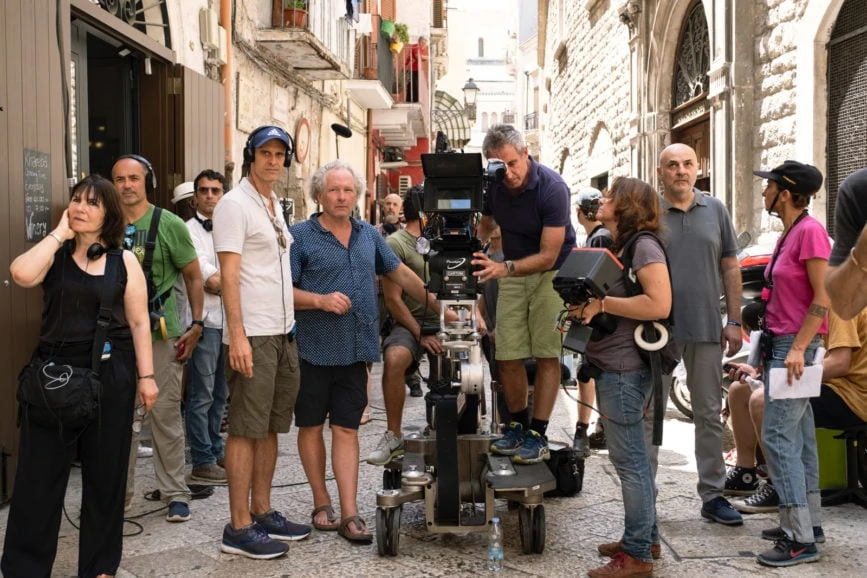
During extensive lens testing, anamorphic options were examined but due to the busy production period, limited lenses were available. “The Sony Venice was excellent but a little sharp for my taste. I wanted to use older lenses, but some were slightly too interesting. I knew we would have many bright burnt-out windows in the back of frame. Not wanting an overly flary or milky look, I ruled out the Canon K35s which are gorgeous but wrong for this film. We ended up shooting full frame 6K with spherical lenses – a set of old Leica R lenses rehoused by TLS for Cinescope, with all equipment coming out of Panalight in Rome.
“The focus of the Leica Rs has a beautiful roll off. The lenses have a gentle level of contrast and deal well with veiling glare. Although the glass has a lovely softness, I used Black Satin filters to remove more edge. As the lenses have inconsistent stop across the range, you must light to around T3 to interchange between them all. Easier when shooting at 2500 ISO.”
Hudson didn’t operate on his previous few films, dedicating more time to working with the director and lighting crew. Wanting to repeat this on The Life Ahead, he teamed up with another “member of Italian filmmaking royalty”, camera operator Daniele Massaccesi (Cloud Atlas, The Martian). “He’s hugely cine literate and brought so much to the project. When blocking a scene, Daniele has the ability to cut to the chase and simplify the coverage in a refreshing, elegant way. He has an amazing eye – he’s a predictive operator rather than a reactive one. Daniele often knows what the actors will do before they do; it’s the art of good operation.”
Composition was an intuitive process, with the actors, locations and the blocking out process often dictating the framing. “The film was not storyboarded; we knew what we wanted to do in broad strokes,” says Hudson. “Spotted on the recce, certain shots were specific, such as the early scene tilting downwards from a shot of the flyover to the back of Momo’s head, cutting to him biting into a peach. Thereafter, we largely went with the flow, responding to the story’s needs.”
As the film is quite contained, with many interior settings, Hudson wanted to open up the world depicted through the exterior sequences. “Cityscapes and expansive wide shots are important, like chapter markers setting the scene and placing all the interiors in a real location.”
Experienced local drone operator Roberto Leoni captured aerial shots, often at sunset, to place the characters in the location. Hudson also asked friend and fellow UK-based cinematographer Baz Irvine ISC to shoot additional footage of the cityscapes and landscapes. After talking him through the areas Hudson wanted to be captured and presenting photos taken on the recces, the DPs toured the area before Irvine did his own recces. “Baz has an exceptional eye,” says Hudson. “I gave him a stripped-back team because there was not a huge budget, and I gave him as much time to shoot as possible. Baz produced an embarrassing amount of amazing work – the editors were spoilt for choice.”
PLANNING AHEAD FOR THE LIFE AHEAD
“When production began, The Life Ahead was an independent film. Netflix bought it only after it had been shot,” says Hudson. “At the start, we didn’t know what deliverables we would be working to but knew there would be a cinema release of some sort as well as a release on a streaming platform, so I thought it would be silly not to allow for a 4K HDR finish.”
Therefore, the team went into principal photography having decided to shoot RAW X-OCN-XT and to master in Dolby Vision 4K HDR, allowing for all the main delivery options – 4K, UHD, HDR, SDR and P3 – “lining up all their ducks in prep” to ensure there were “no surprises” when it came to the grade and post and importantly the deliverables.
Kiwi Digital, a digital solutions lab based at Cinecittà Studios in Rome, provided all DIT services. Rome-based post-production house Reel One was responsible for post and finishing. Having close ties with both companies, digital workflow supervisor Giardello was ideally positioned to help guarantee workflow continuity. “It was amazing having Francesco following the project from the camera tests, to the LUT and workflow design, to the finishing work at Reel One,” says Hudson.
Throughout the shoot, DIT Fabio Ferrantini, one of Giardello’s frequent collaborators, used live grade on set with the show LUT and an ACES colour pipeline to fine tune the look. The rushes would then be sent to the near set lab where data manager Andrea Soncin applied the CDLs (Cinematographer Decision List – the live grade information carried in the rushes metadata) and did any balancing before preparing the transcodes for the edit. “Fabio’s role was quality control and grading and ensuring the rushes looked great, rather than data management. This meant before we even went into the grade, the edit assemblies looked beautiful, polished and as intended, allowing everyone to get used to the look of the film, making things easier down the line,” says Hudson.
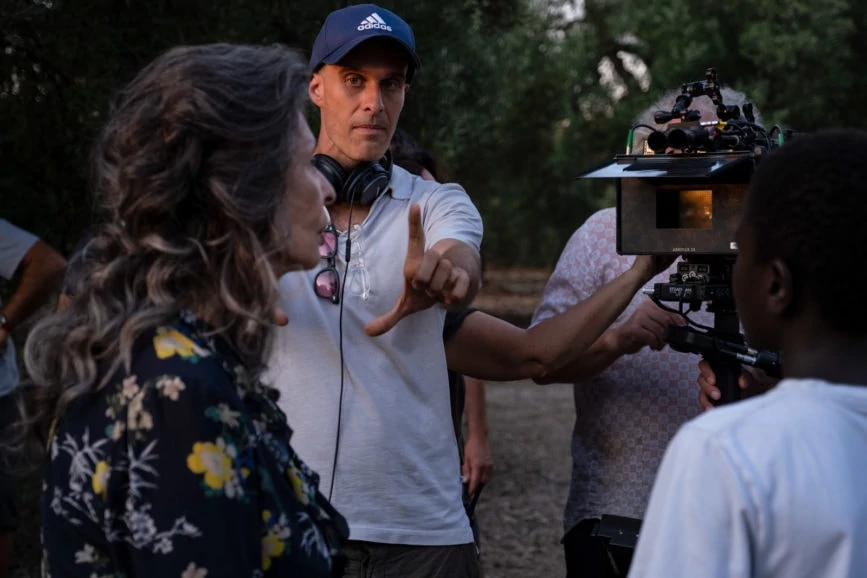
In February 2020, post shoot, Hudson travelled to Rome to carry out a test grade and assess the Dolby Vision 4K HDR grading process. “At that time, we knew Netflix was on board. Coincidentally, Netflix had employed Francesco to manage their post-production support and creative technologies infrastructure, so he’d nurtured the project from conception to delivery and was perfectly placed to support the film and its look,” says Hudson
The test grades soon proved their value because shortly after completion, lockdown occurred. The Life Ahead became one of the first films to remotely grade during the pandemic. Instead of travelling to Rome for the final grade, Hudson graded from his London basement office using a 55-inch Flanders 4K HDR monitor and a hired decoder. For the remote grade, DIT Ferrantini’s CDL travelled in the footage metadata. “When the images came through the DaVinci Resolve and onto the screen, we were looking at the grade we did on set – the grade was 85% of the way there. All that work in prep paid off,” says Hudson.
“I was incredibly lucky to have the gifted colourist Paolo Verrucci and post supervisor Valerio Vittori supporting me throughout the whole testing period and the remote grade. Paolo has a superb eye and did an amazing job enhancing our and polishing our image in what wasn’t always the easiest of circumstances.”
Giardiello and his team designed a 4K HDR remote grading system with remote production and film equipment rental company CineArk. “Until recently, when making films the primary deliverable was for them to be shown on cinema screens and the best way to grade a project for the cinema is on a big projected screen. Sadly, nowadays, and more so due to the pandemic, the first place anyone sees a film is on their TV, so the primary deliverable now is moving towards HDR,” says Hudson.
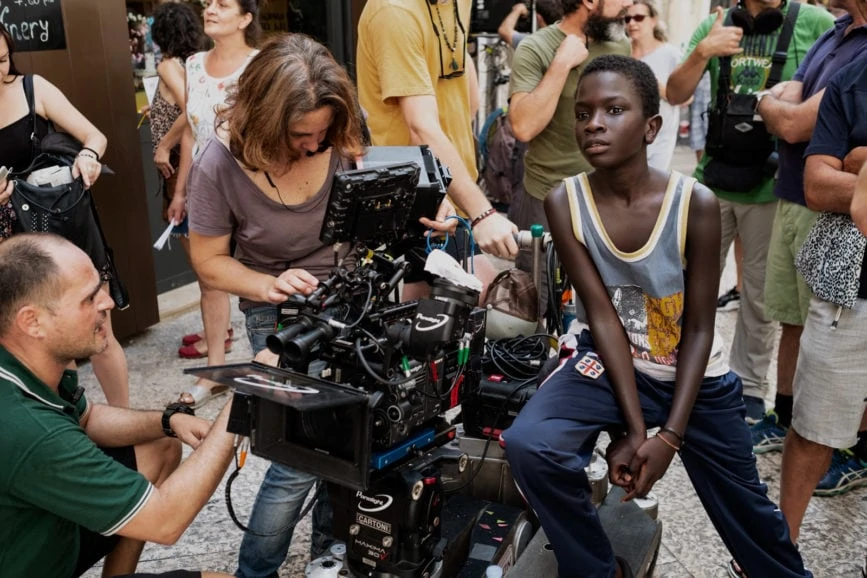
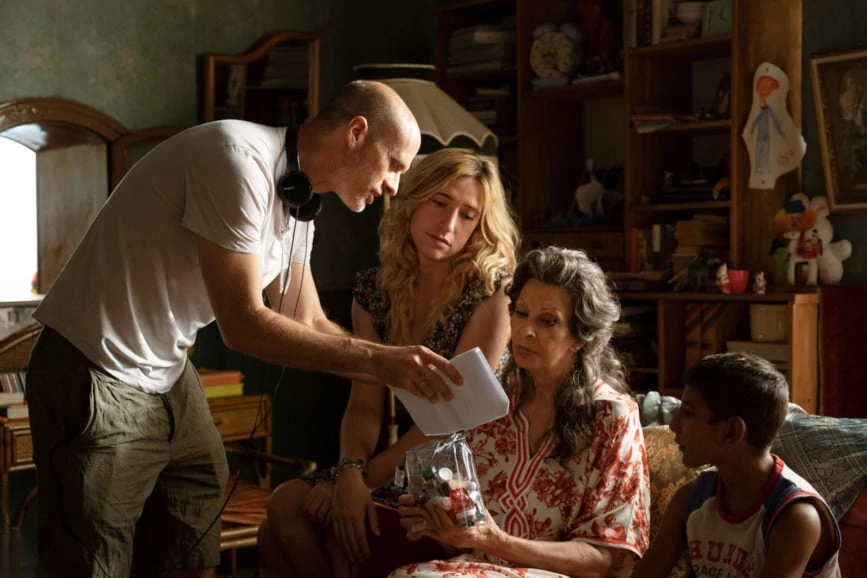
“At the time of the remote grade I had lousy internet, so we had to do it using six 4G SIM cards in a mobile SIM card router, an encoder in Rome and a decoder in London, providing enough bandwidth to stream 4K HDR live from Rome. It worked remarkably well considering the technology and 4K HDR remote system hadn’t existed 10 days before, all thanks to Francesco, James Metcalfe at CineArk, and Netflix’s support. Unusually, we had the luxury of time to grade because everything had shut down. I became far more involved in that process than normal. It was a nice way to occupy myself during lockdown.”

